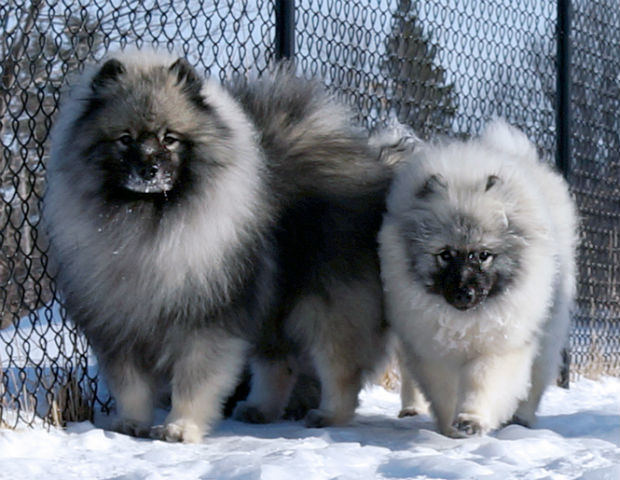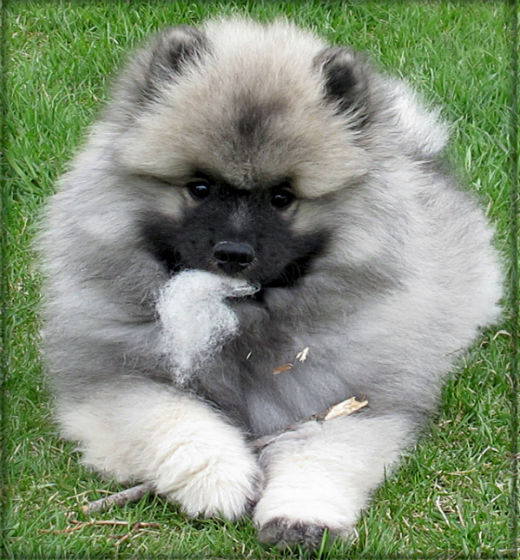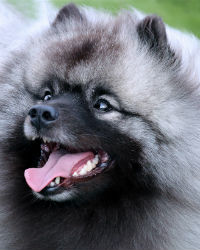Origins – The Keeshond descends from the same prehistoric ancestry from which the much larger Samoyeds, Huskies, Norwegian Elkhounds and tiny Pomeranians descend. They, known in Holland as “Keeshonden” (pronounced “kayz-hawnd-en), were extensively used as watchdogs on river boats, farms, and barges in the 17th and 18th centuries.
General Appearance – The Keeshond is a short-backed, well-balanced dog that is naturally beautiful. The breed has a characteristic alert carriage, intelligent expression, stand-off coat, richly plumed tail well curled over the back, intelligent expression, and small pointed ears.
Coat – This is a double-coated breed with a soft, short undercoat and harsh, standoffish outer “guard” hairs. A proper coat is easy to maintain with a thorough brushing once a week. If brushed regularly most adult Keeshonden only need to be bathed 3 or 4 times a year.
Size – The Keeshond is medium size – 18 inches for males and 17 inches for bitches.
Colour – Keeshonden are dramatically marked with their black to silver or cream coats. The facial expression is largely dependent on the distinctive characteristic called “spectacles.”
Temperament – Keeshonden have only been bred to be a family companion and watchdog, never bred to hunt or attack. They are somewhat aloof with strangers, but at the same time, friendly and never aggressive. Renowned as gentle, intelligent and devoted to their owners with a special fondness for children. They can be mischievous and have a keen intellect which makes the breed excellent candidates for performance sports. Always playful and slightly naughty the Keeshond lives up to its nickname the “Smiling Dutchman.”

Feeding: Keeshonden are a sturdy breed which does well on any good quality kibble or raw diet. Their weight needs to be monitored for health reasons.
Exercise – The Keeshond has moderate exercise needs. He will be satisfied with a walk on leash or playtime in a yard and generally adapts to his owner’s activity level.
Training & obedience: Obedience training is recommended. Keeshonden love being with their owners and do very well in virtually all dog sports
Crate Training – Recommended for housebreaking and for safe travel. Housebreaking should start early and be consistent.


